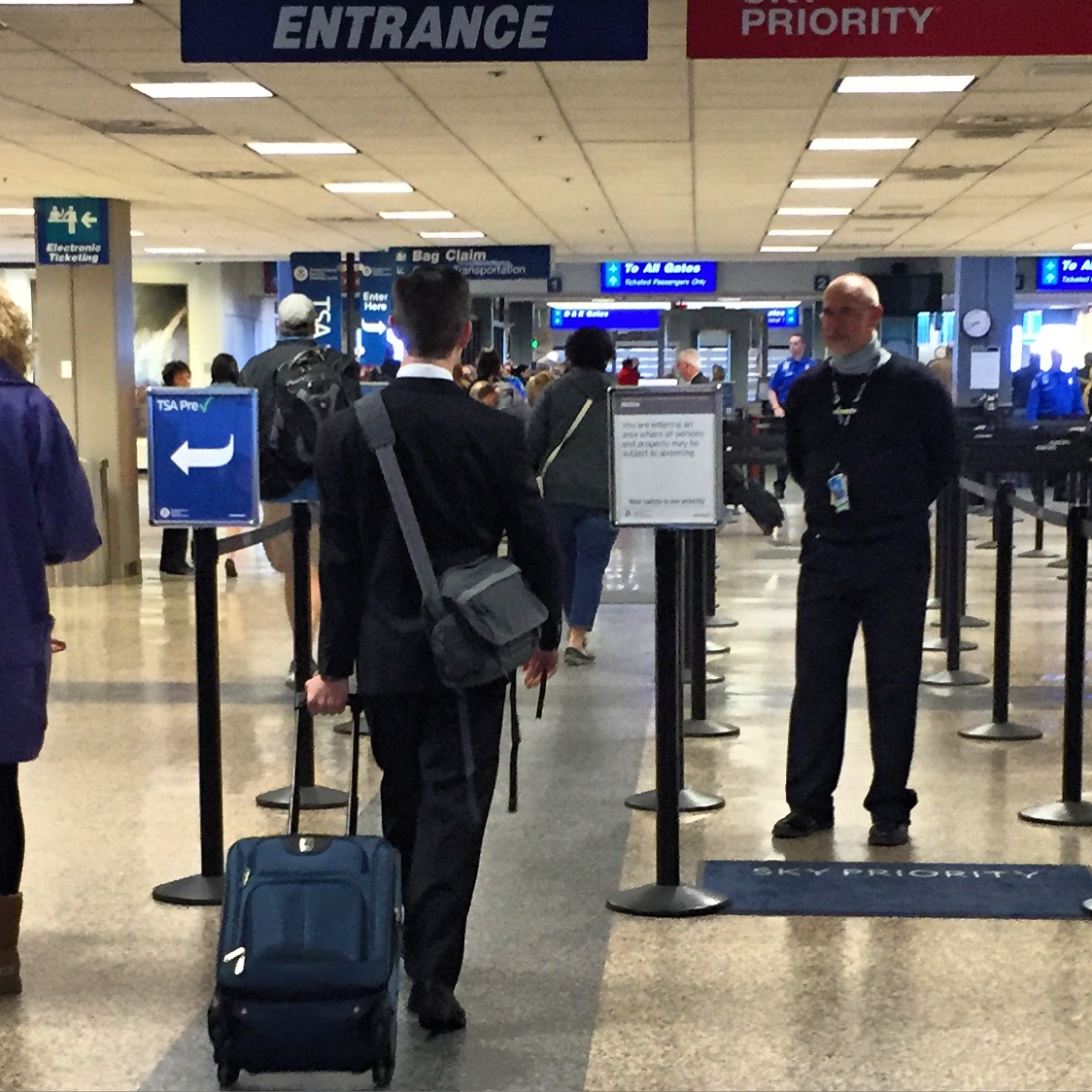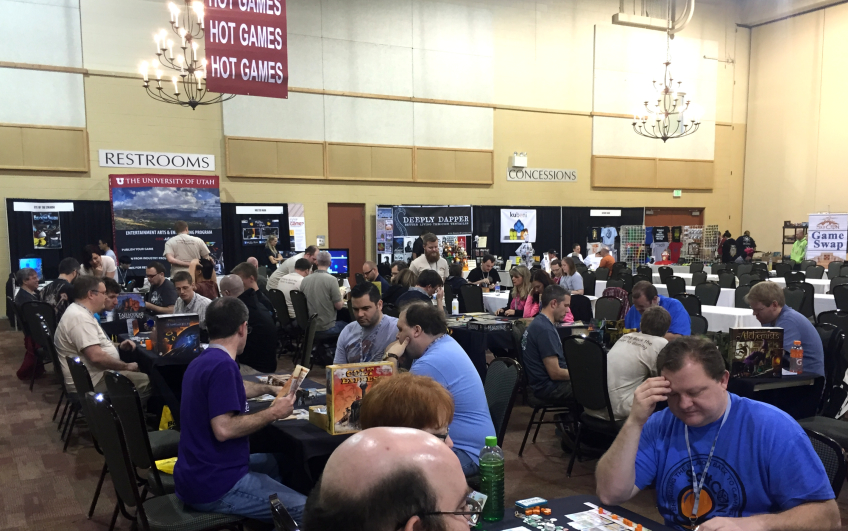Inkognito – deduction game review
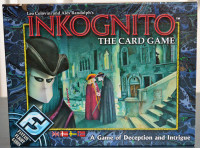
If your family likes light deductions games, Inkognito: The Card Game may be right up your alley. Read on and deduce for yourself…
In Inkognito players are secret agents at Carnival in Venice. Each player is on a secret mission to make contact with his or her partner agent and trade information to discover the code to break into a safe and win the game.
It’s a fun deduction game for 2-5 players that plays in about 30 minutes.
There are actually a couple versions of Inkognito games. Both have the same setting and theme, but with slight differences in play.
Our review is of the Fantasy Flight Games Inkognito card game.
How to play Inkognito: The Card Game
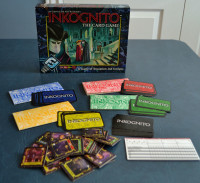
The object of the game is to discover who your partner is, what the safe combination is, and then to meet up with your partner to reveal the combination. (Even if your partner doesn’t know the answers, you’ll still win as a team if your revelation is correct.)
During the game players will rendezvous with the other players or with the Ambassor in locations around Venice and exchange information. Through these meetings and information exchanges, players will work out the identity of the other players as well as the order of the secret codes to complete the combination.
Set Up
To begin the game, each player picks a color and receives:
- A secret identity (Lord Fiddlebottom, Colonel Bubble, Agent X, or Madame Zsa Zsa)
- A secret code number (part of the combination: 13, 28, 36, or 47)
- A privacy screen of his/her color
- 4 identity cards of his/her color
- 4 number cards of his/her color
- 5 location tiles of his/her color
- 1 worksheet
The partnerships are always Lord Fiddlebottom & Colonel Bubble against Agent X & Madame Zsa Zsa. So if you’re Agent X, then you’ll know your partner will be whoever is playing as Madame Zsa Zsa.
The 4 black identity cards are shuffled and 1 is handed secretly to each player. This is their True Identity.
The 4 black number cards are shuffled and 1 is handed secretly to each player. This is their part of the combination.
The black cards can only be shown to other players under special conditions (explained later).
The 5 black location tiles are shuffled and placed face-down in a stack. These will be the Ambassador’s locations.
The worksheet very handy to record information gathered as well as information shown to the other players. It also must be kept secret with the privacy screen.
Each time players “meet” with another player, they’ll use the columns to record which of the cards the other player shows them as well as which cards they show that other player. There are multiple columns for recording information because players may meet up multiple times.
Playing the Game
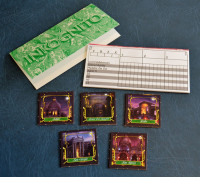
Each turn is divided into 4 steps:
1. Choose a Location
The first player chooses one of his un-played location tiles and places it face-up in front of him on the table. The player to his left then chooses one of his un-played location tiles and places it face-up on the table and so-on through all players. Once all have selected a location, the top tile of the Ambassador stack is turned over.
2. Investigation
During this step, 3 different things can happen:
If exactly 2 players reveal the same location, those 2 players must exchange information.
If exactly 1 player reveals the same location as the Ambassador, he may question the Ambassador.
For any locations where these conditions are not met (more than 2 players in a location or a player is all alone in a location), then those players don’t get any information this round.
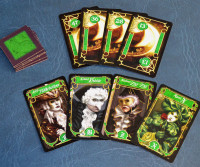
Exchanging information: When a player meets alone in a location with another player, each player will choose two cards of his color to secretly show the other player. They can be identity cards, number cards, or a combination of the two. The only stipulation is that one card must be True and one must be False.
If those two players meet alone again, they can’t show the same pairing of cards – at least one card shown must be different.
Questioning the Ambassador: When a player meets alone in a location with the Ambassador, that player may demand that any other player show him one of his black cards. Thus, the player meeting with the Ambassador will discover a True identity or True number.
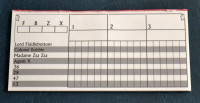
3. Update the Worksheet
After each meeting, players will make notes in their worksheet of what they were shown. They will also note what cards they showed the other player. That way, they can recall what pair of cards they’ve shown the other players throughout the game.
4. A New Turn Begins
All the revealed location tiles remain face-up on the table unless all 5 locations have been visited.
The player to the left of the first player now becomes the new first player to select a location to visit.
Once all 5 locations have been visited, players take their location tokens back in hand and the Ambassador locations tiles are shuffled and a new stack created before a new round begins.
Winning the Game
Once a player has deduced what code is held by each agent, he/she will have the correct combination to open the safe. However, that player must first meet alone in a location with his partner.
When they meet alone in a location, instead of Investigating and exchanging cards, the player announces, “You’re my partner and I have the combination!” – or something of the sort and reveals his worksheet with the code in the right order.
If that player is correct, he and his partner win the game!
If he’s incorrect, the other team wins.
Why we like Inkognito
We like deduction games in our family because they’re a great mental exercise. It’s fun trying to figure things out on your own.
In Inkognito, not only do you need to figure out the identity of each player and their part of the code, but you also need to figure out how to get to that information. It can be tricky figuring out who you want to meet with and how to do so by choice of the location tiles.
You can obviously see what the players before you in turn order have chosen as their location, but you don’t know what the Ambassador location will be until the end of the round. And since the location tiles remain face-up, you can figure out what locations each player has left to play. So with a bit of reasoning you can set yourself up to find out information – or even step into a location to block others from meeting alone.
And when you do meet alone in a location to exchange with another player, choosing which cards to show him/her adds another element of fun. Getting to show one card that’s true and one that’s false keeps everyone on their toes.
But even though it’s a deduction game, there’s still an element of luck. The unknown Ambassador location can be a big factor. He may either thwart your plans or give you an advantage. Either way, we think it adds a great balance to the game.
Yes, Inkognito is a deduction game, but it’s on the lighter end of deduction games – making it very accessible to the whole family.
Best with 4-Players
While Inkognito says it’s for 2-5 players, it’s definitely best with 4 players. That’s because the game centers around 4 characters – 2 sets of 2 secret partners. In a 4-player game, every player gets to be a character in the game.
However, in a 2-, 3-, or 5-player game, there are special rules to account for the Ambassador and “dummy” players.
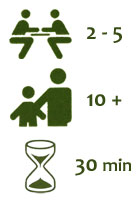 For example, in a 5-player game, the 5th player plays the role of the Ambassador and he too can figure out the combination to win the game. The Ambassador selects his location tile at the start of the round and places it face-down on the table. If the Ambassador meets someone alone, that player can still demand another player show him on of their black cards, but the player must then also show the Ambassador.
For example, in a 5-player game, the 5th player plays the role of the Ambassador and he too can figure out the combination to win the game. The Ambassador selects his location tile at the start of the round and places it face-down on the table. If the Ambassador meets someone alone, that player can still demand another player show him on of their black cards, but the player must then also show the Ambassador.
In a 3-player game, the 4th role is played by a “dummy” player. During play this player’s location tiles are chosen at random. If another player meets alone with this player, he/she simply chooses one of the dummy player’s black cards to look at. To end the game, players only need to meet with any other agent alone and reveal the correct combination.
In a 2-player game, one player plays the role of an agent and the other player plays the role of the Ambassador. The other 3 players are dummy players. There are also other rules on slight changes to the game.
We think it’s great that the publishers made rules for 2, 3, and 5 players to adjust the game. However, each of these ways diminishes some of the fun.
Our recommendation is to play this as a 4-player game every time.
The other version
We can’t say much about the other version of Inkognito because we haven’t played it. If you’d like to know more about it, you can check it out on the Ares Games website.
How does Inkognito score on our “Let’s Play Again game meter?”
Inkognito: The Card Game scores well on our “let’s play again” game meter. It seems that we’ve always had requests to play “one more time” with Inkognito. It’s a light enough deduction game that your brain isn’t fried at the end. It’s also very easy to start a new game right after one ends.

